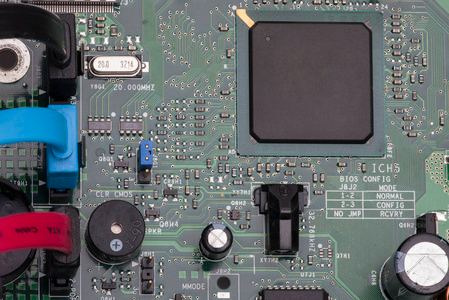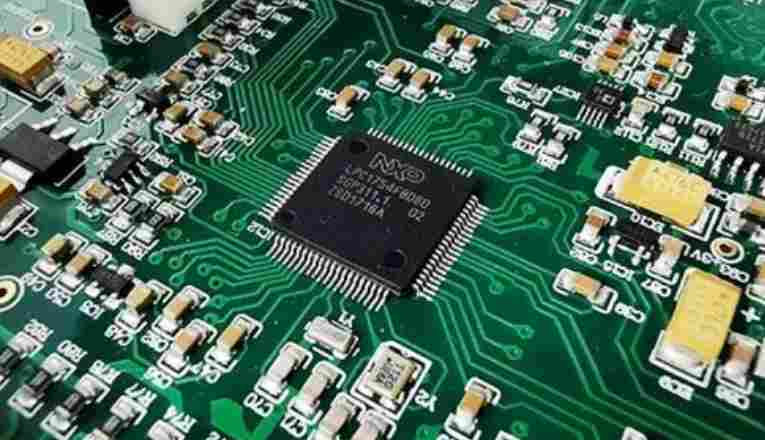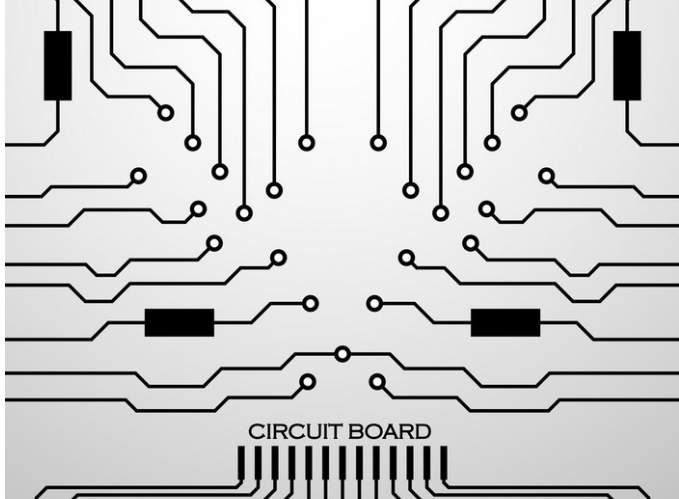
It is an inevitable trend to use vacuum laminating technology in order to completely solve the problem of bubble formation and improve composite board adhesion. In the positioning technology for 4 ~ 6 layers of board has been commonly used pin-free positioning technology (MASSI. AM), and X-ray positioning drilling is used to improve the positioning accuracy of the multilayer plate.
Because of the rapid development of electronic technology, the printed circuit technology has been developing. PCB board through single-sided - double-sided multilayer development, and the proportion of multilayer board is increasing year by year. Multilayer board performance to high, fine, dense, fine, large and small two extreme development. Laminating is an important process in the manufacture of multilayer board. The control of laminating quality becomes more and more important in the manufacture of multilayer board. Therefore, to ensure the laminate quality, it is necessary to have a good understanding of the laminate process. Therefore, based on years of laminating practice, this paper summarizes how to improve the laminating quality of multilayer board in terms of technology:
One,design the inner core plate that meets the requirements of lamination.
Due to the gradual development of laminating machine technology, hot pressing machine from the former non-vacuum hot pressing machine to the present vacuum hot pressing machine, the hot pressing process is in a closed system, can not be seen, touch. Therefore, before laminating, it is necessary to carry out a reasonable design of the inner plate. Some reference requirements are provided here:
1. The thickness of the core plate should be selected according to the total thickness requirements of the multilayer plate. The thickness of the core plate should be consistent, the deviation should be small, and the direction of the warp and weft of the material should be consistent, especially for more than 6 layers of multilayer plate.
2. There should be a certain distance between the outer dimension of the core plate and the effective unit, that is, the distance between the effective unit and the edge of the plate should be kept as large as possible under the premise of not wasting materials. Generally, the distance between four layers of plates is required to be greater than 10mm, and the distance between six layers of plates is required to be greater than 15mm.
3, the design of positioning holes, in order to reduce the deviation between layers and layers of multi-layer plate, so in the design of multi-layer plate positioning holes need to pay attention to: 4 layers of plate only need to design more than 3 positioning holes for drilling. In addition to the design of positioning holes for drilling, more than 5 overlapping positioning rivet holes between layers and layers and more than 5 positioning holes for tool plates used for rivet should be designed for multilayer plates with more than 6 layers. But the design of positioning holes, rivet holes, tool holes are generally the higher the number of layers, the design of the number of holes, and the position as far as possible to the side. The main purpose is to reduce the alignment deviation between layers and to leave a large space for manufacturing. The target shape design should meet the requirements of automatic recognition of target shape by the target shooting machine as far as possible. The general design is complete circle or concentric circle.

4, the inner core PCB board requirements no open, short, open, no oxidation, clean surface, no residual film.
Two, to meet the requirements of PCB users, choose the appropriate PP, CU foil configuration.
Customer requirements for PP are mainly reflected in the dielectric layer thickness, dielectric constant, characteristic impedance, voltage resistance, laminate appearance smoothness and other requirements, so the selection of PP can be based on the following aspects to choose:
1. Resin can fill the gap of printed wire when laminating.
2, can fully exclude the air and volatile matter between laminates when laminating.
3, can provide the necessary thickness of multilayer dielectric layer.
4, can ensure the bond strength and smooth appearance.
According to many years of production experience, I personally think that PP can be used in the configuration of 7628, 7630 or 7628+1080, 7628+2116 when 4 layers are laminated. More than 6 layers of multilayer PP selection is mainly 1080 or 2116, 7628 is mainly used as PP to increase the thickness of the medium layer. At the same time, PP requires symmetrical placement to ensure mirror effect and prevent plate bending.
5, CU foil mainly according to printed circuit board user requirements respectively configuration of different models, CU foil quality in line with IPC standards.
Three, the inner core plate processing technology
When laminating multilayer board, the inner core board should be processed. The treatment process of the inner plate includes black oxidation process and brown treatment process. The oxidation process is to form a black oxide film on the inner copper foil, and the thickness of the black oxide film is 0.25-4). 50mg/cm2. The Browning process (horizontal Browning) is to form an organic film on the inner copper foil. Inner plate processing process functions are:
1, increase the specific surface of the inner copper foil and resin contact, so that the binding force between the two is enhanced.
2. Increase the effective wettability of molten resin flow to copper foil, so that the flowing resin has sufficient ability to extend into the oxide film, and show strong grip after curing.
3. Resist the decomposition of hardener dicyandiamide in liquid resin at high temperature and the influence of water on the copper surface.
4, make the multilayer board in the wet process to improve acid resistance, prevent pink circle. The control of laminating parameters mainly refers to the organic matching of laminating "temperature, pressure and time".
1: Temperature. Several temperature parameters are important during lamination. That is, the melting temperature of the resin, the curing temperature of the resin, the setting temperature of the hot plate, the actual temperature of the material and the speed change of the temperature rise. The melting temperature is the resin begins to melt when the temperature rises to 70℃. As the temperature rises further, the resin melts further and begins to flow. In the temperature of 70-140℃ this period of time, the resin is easy to fluid, it is because of the fluidity of the resin, to ensure the resin filling, wetting. With the gradual increase of temperature, the fluidity of resin experienced a change from small to large, and then to small, and finally when the temperature reaches 160-170℃, the fluidity of resin is 0, then the temperature is called curing temperature. In order to make the resin can be well filled and wet, it is very important to control the temperature rise rate. The temperature rise rate is the embodiment of the laminating temperature, that is, to control when the temperature rises to how high. The control of temperature rise rate is an important parameter of laminate quality, and the temperature rise rate is generally controlled at 2-4℃ / MIN. The heating rate is closely related to the number and type of PP. For 7628PP, the heating rate can be faster, that is, 2-4℃ / min; for 1080 and 2116PP, the heating rate can be controlled at 1.5-2 ℃ / MIN. At the same time, the quantity of PP is large, and the heating rate can not be too fast. Because the heating rate is too fast, the wettability of PP is poor, the resin fluidity is large, and the time is short, it is easy to cause sliding plate and affect the lamination quality. The temperature of hot plate mainly depends on the heat transfer of steel plate, steel plate, cow paper, etc., which is generally 180-200℃.
2: Stress. The multilayer board is based on whether the resin can fill the interlayer cavity and exhaust the interlayer gas and volatile matter. Since the hot press is divided into non-vacuum press and vacuum hot press, there is a section of pressure from the pressure. Two stage compression and multiple stage compression in several ways. General non-vacuum press adopts general pressure and two-stage pressure. The vacuum pump adopts two-stage pressure and multi-stage pressure. High, fine and fine multilaminates are usually pressurized in multiple stages. The pressure size is generally determined according to the pressure parameters provided by P and P suppliers, generally ranging from 15-35kg/cm2.
3: Time. The time parameters are mainly the control of laminating pressure timing, heating timing, gel time and so on. For two-stage laminating and multi-stage laminating, controlling the timing of main pressure and determining the transition time from initial pressure to main pressure is the key to controlling the quality of laminating well. If the main pressure time is applied too early, it will lead to extruded resin, flow glue too much, resulting in laminate lack of glue, thin plate, even skateboard and other adverse phenomena. If the main pressure is applied too late, it will cause defects such as weak laminating bond interface, cavity, or bubble.







